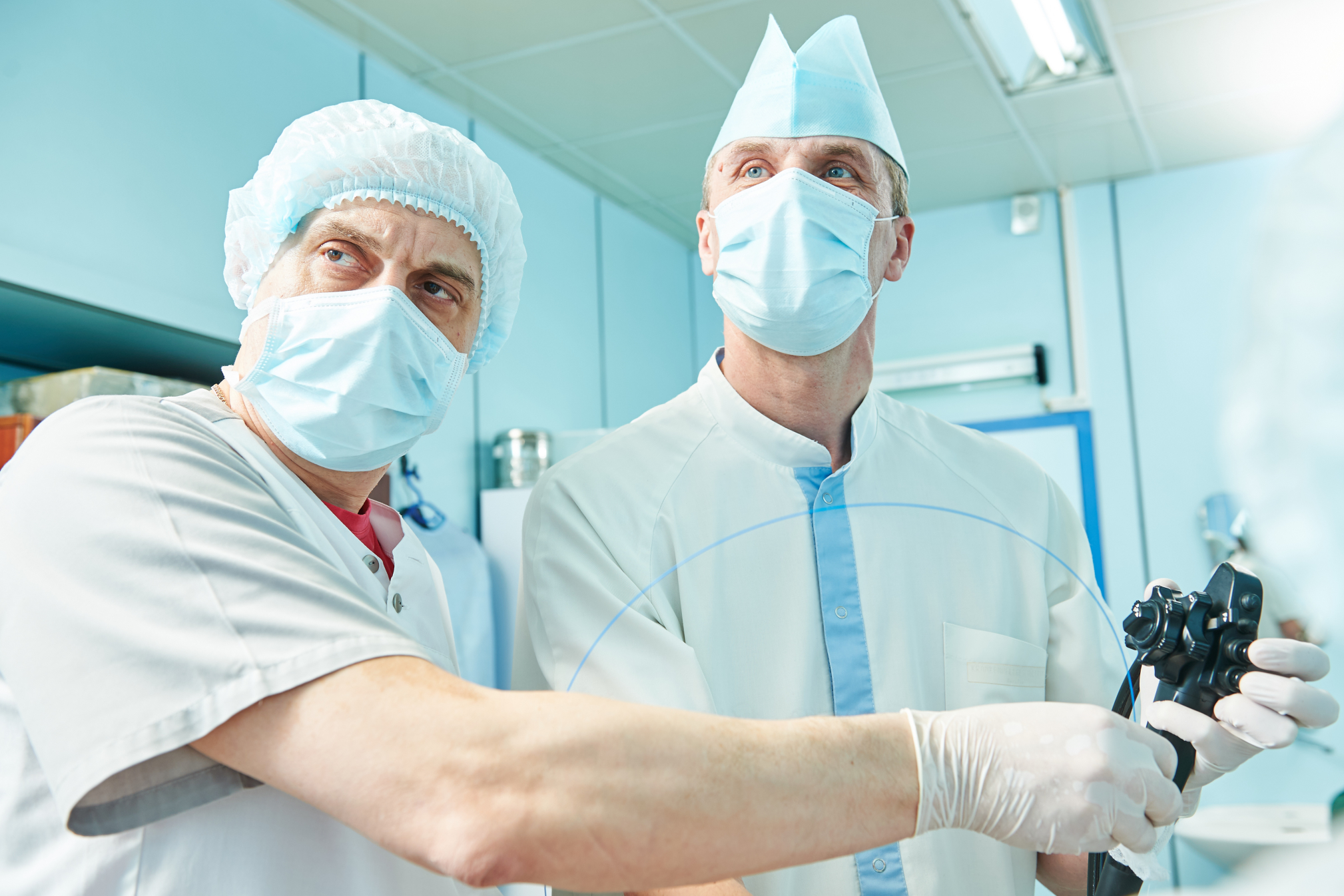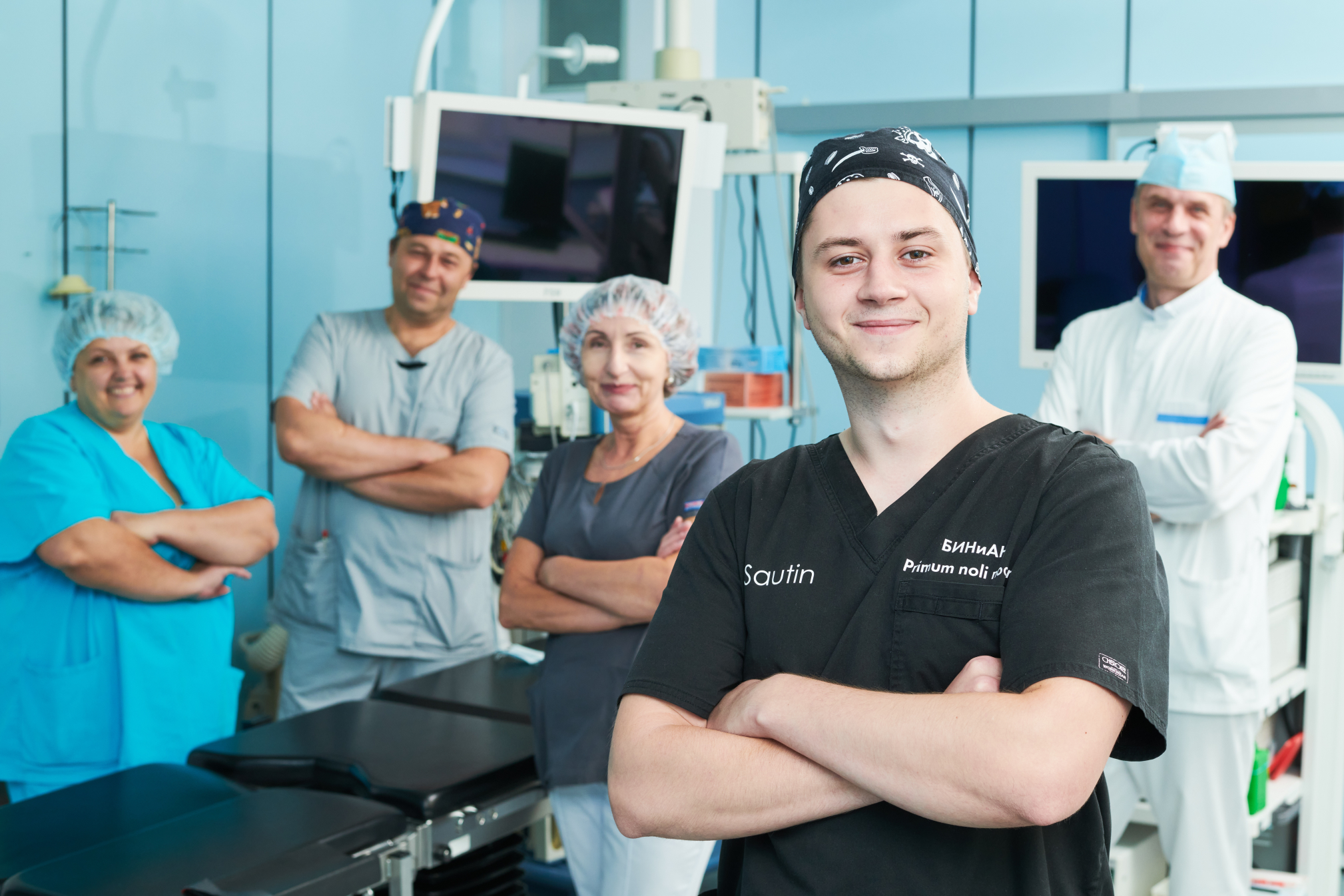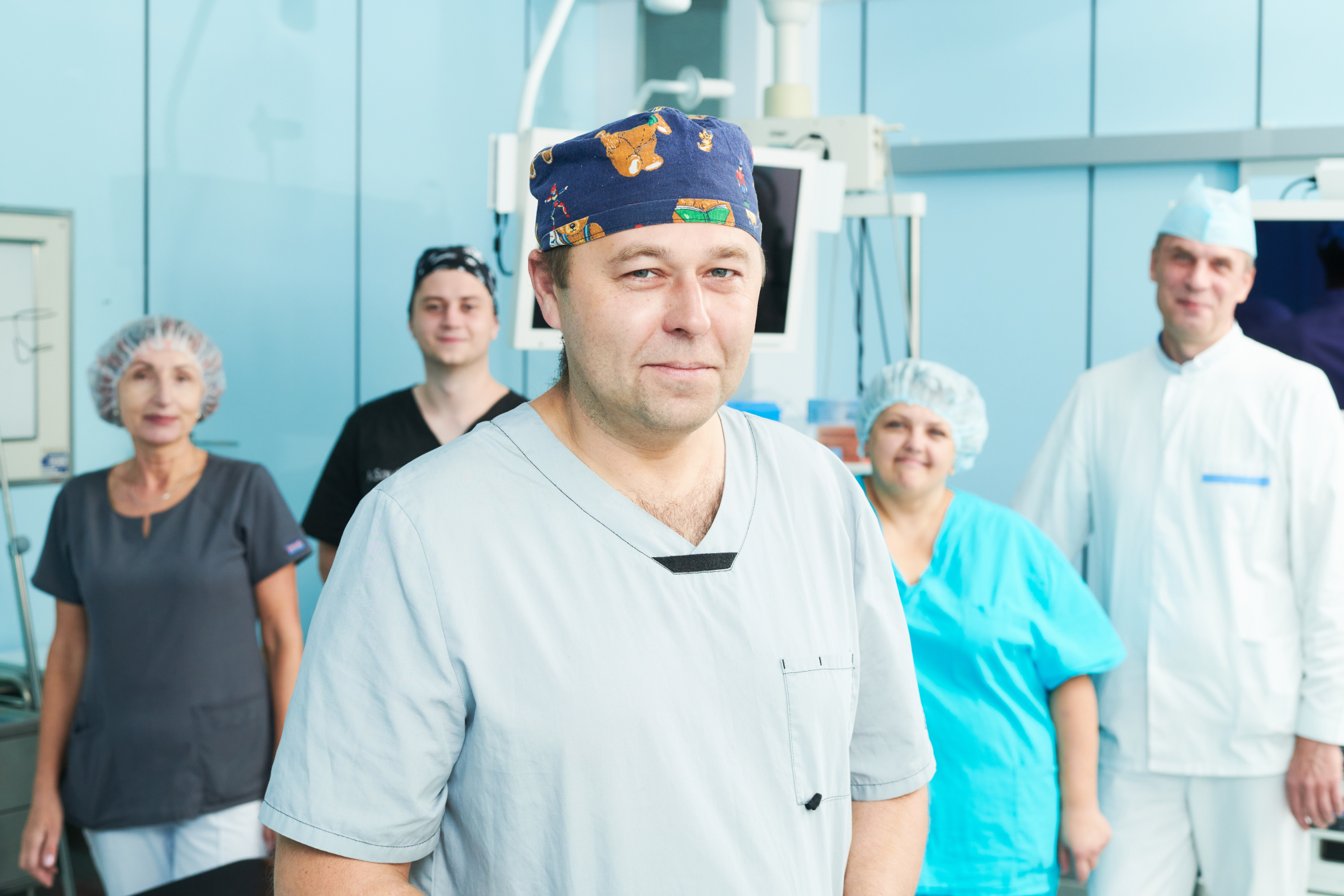Endoscopic room
1st floor
The endoscopic office is a structural unit of the Russian National Center for Pediatric Surgery and provides a wide range of modern highly informative diagnostic research methods.
During the year, about 2,500 diagnostic examinations and more than 450 operations using flexible endoscopy are performed in the endoscopy room.
Modern endoscopic techniques make many surgical interventions minimally invasive and accelerate successful treatment as much as possible. Digital technologies help our doctors not only diagnose diseases of the digestive and respiratory systems, identify pathological changes in the early stages, but also thoroughly monitor the course of an examination or operation, conduct consultations at the time of the study, as well as return to the results of operations and diagnostic studies done 3-5 years ago.
The department is equipped with modern endoscopic equipment from Olympus and Pentax companies. The presence of small diameter endoscopes (“pediatric”) and ultrathin endoscopes allows safe examination and treatment of children of all age groups, including newborn children. Most endoscopic procedures are performed under general anesthesia, in a hospital setting.
During the year, about 2,500 diagnostic examinations and more than 450 operations using flexible endoscopy are performed in the endoscopy room.
Modern endoscopic techniques make many surgical interventions minimally invasive and accelerate successful treatment as much as possible. Digital technologies help our doctors not only diagnose diseases of the digestive and respiratory systems, identify pathological changes in the early stages, but also thoroughly monitor the course of an examination or operation, conduct consultations at the time of the study, as well as return to the results of operations and diagnostic studies done 3-5 years ago.
The department is equipped with modern endoscopic equipment from Olympus and Pentax companies. The presence of small diameter endoscopes (“pediatric”) and ultrathin endoscopes allows safe examination and treatment of children of all age groups, including newborn children. Most endoscopic procedures are performed under general anesthesia, in a hospital setting.



Department staff
Doctors from the first and highest qualification categories work in the endoscopy department. The cabinet staff has extensive work experience. Doctors constantly take part in conferences, training, work in other clinics, etc.

MARAKHOVSKY
Kirill Yurievich
endoscopist
(Head of the Diagnostic Department),
highest qualification category, PhD
Kirill Yurievich
endoscopist
(Head of the Diagnostic Department),
highest qualification category, PhD

PATALETA
Oleg Anatolyevich
endoscopist,
first qualification category
Oleg Anatolyevich
endoscopist,
first qualification category

SANFIROV
Kirill Dmitrievich
endoscopist,
first qualification category
Kirill Dmitrievich
endoscopist,
first qualification category

SAUTIN
Oleg Nikolaevich
endoscopist
Oleg Nikolaevich
endoscopist

SNIGIREVA
Elena Vasilyevna
nurse (senior)
Elena Vasilyevna
nurse (senior)
The main types of endoscopic examinations
esophagogastroduodenoscopy (examination of the esophagus, stomach, 12PC)
colonoscopy (examination of the colon)
balloon assisted enteroscopy (examination of the small intestine)
rectosigmoscopy (examination of the rectum and sigmoid colon)
flexible and rigid bronchoscopy for children, including newborns (examination of the larynx, trachea and bronchi)
endosonography (endoscopic ultrasonography) using ultrasound mini-probes Olympus including newborn
capsule endoscopy
During endoscopic examinations, the following additional diagnostic methods are performed according to indications:
targeted biopsy of the mucosa and pathological formations for histological examination, diagnosis of celiac disease, inflammatory diseases of the colon (Crohn's disease, ulcerative colitis)
``ladder`` biopsy of the esophagus for the diagnosis of eosinophilic esophagitis
determination of Helicobacter pylori
examination of the mucosa using additional imaging methods – in the mode of narrow-wave illumination and optical magnification
bronchosmaps for microbiological, cytological, mycological studies
bronchoalveolar lavage, biopsy (forceps and brush biopsy)
The following endoscopic therapeutic manipulations and minimally invasive operations are performed
endoscopic polypectomy
endoscopic hemostasis (clipping, pricking, coagulation of a bleeding vessel, using applicative hemostatics)
removal of foreign bodies of the esophagus, stomach, colon, trachea and bronchi
endoscopic balloon dilatation in pathology of the esophagus and colon
stenting of hollow organs of the gastrointestinal
tract endoscopic sclerosis of venous malformations of the gastrointestinal tract
ligation and endosclerosis of varicose veins of the esophagus
percutaneous endoscopic gastrostomy
placement of a small intestinal probe for enteral nutrition
endoscopic resection and dissection of the gastrointestinal mucosa
- Restoration of the duodenal lumen in some cases of high congenital intestinal obstruction;
- endoscopic treatment of congenital and acquired stenoses of the trachea and main bronchi and tracheoesophageal fistulas.
Such unique operations are performed as:
Patients after endoscopic interventions are under the supervision of experienced surgeons and pediatricians.
